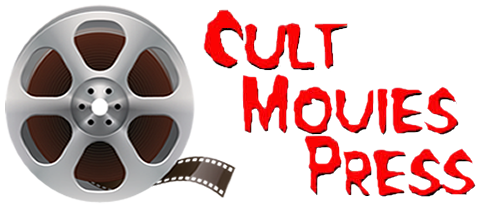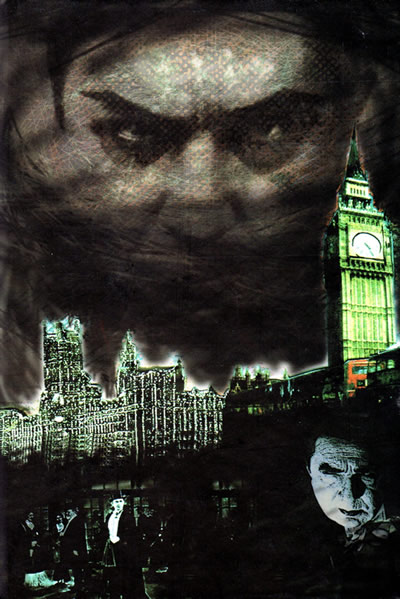
VAMPIRE OVER LONDON
Bela Lugosi in Britain, 2nd Edition
PREFACE
Bela Lugosi, renowned for his stage and film portrayal of the vampire Count Dracula and for his long career in horror movies, is a legendary figure of Hollywood of the 1930s and 1940s. On starring in the classic 1931 film Dracula, he became forever chained to his one great role. So memorable was Lugosi’s portrayal of Dracula that he could never quite convince producers or his public that he could play anything else. His star followed the fortunes of Gothic horror movies. As the great films of the 1930s degenerated into the juvenile fare of the 1940s, his career inevitably declined. In 1951, near the end of his life and with horror films out of fashion, Lugosi spent eight months in Britain unsuccessfully attempting one last comeback. He toured for six months in a stage production of Dracula, and starred in a movie, Mother Riley Meets The Vampire.
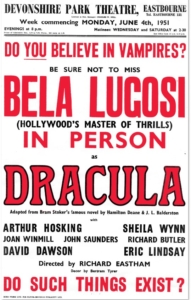 The first edition of this book appeared in 2000, with the modest goal of correcting the historical record on Lugosi’s time in Britain in 1951. The scant mention that 1951 receives in earlier Lugosi biographies is incorrect. For what is generally described as a short-lived production, Dracula of 1951 left far too many traces. Theatre programs from different cities across Britain often turn up at collectors’ fairs and Internet auctions, as do the postcard size photos that Lugosi distributed to his fans. A surprising number of newspaper clippings were readily found in various archives. A handful of memoirs from the period mention the play and its star. The Stage, the trade journal of British theatre, reviewed Dracula four times as it played in various theatres. A tally of all the sources shows that the 1951 Dracula did not—as legend insists—close soon after its premiere. Lugosi and Dracula toured across Britain in well over 200 performances, usually to excellent reviews. Lugosi himself, in a December 1951 television interview now widely available online and on DVD, plainly states that he had spent six months touring in Dracula. He did not exaggerate, but no one believed him.
The first edition of this book appeared in 2000, with the modest goal of correcting the historical record on Lugosi’s time in Britain in 1951. The scant mention that 1951 receives in earlier Lugosi biographies is incorrect. For what is generally described as a short-lived production, Dracula of 1951 left far too many traces. Theatre programs from different cities across Britain often turn up at collectors’ fairs and Internet auctions, as do the postcard size photos that Lugosi distributed to his fans. A surprising number of newspaper clippings were readily found in various archives. A handful of memoirs from the period mention the play and its star. The Stage, the trade journal of British theatre, reviewed Dracula four times as it played in various theatres. A tally of all the sources shows that the 1951 Dracula did not—as legend insists—close soon after its premiere. Lugosi and Dracula toured across Britain in well over 200 performances, usually to excellent reviews. Lugosi himself, in a December 1951 television interview now widely available online and on DVD, plainly states that he had spent six months touring in Dracula. He did not exaggerate, but no one believed him.
In gathering the surviving records of the actor’s time in Britain, a grander purpose emerged. 1951 was very much Bela Lugosi’s last hurrah—an aging star’s last grasp at greatness, a last chance to rekindle the legend that both consumed and sustained him.
Setting the record straight required a good deal of assistance, for which we are forever grateful. Documenting the dates and places of Lugosi’s many stage appearances in 1951 was largely done at the British Newspaper Library, in Colindale, north London. By law, copies of every periodical published in Great Britain go to the BNL, thus it is an invaluable repository of forgotten niches in the life of Britain. Also valuable to our research were the holdings of the Ackerman Archives, the Lincoln Center Library of the Performing Arts, the British Film Institute, the Westminster Reference Library, the central British Library, and the Family Records Centre, where vital statistics on Bela’s British co-workers could be traced. The Stage graciously published our letters of inquiry which helped us find several key people and allowed us to reprint in Appendix 4 articles relating to Dracula in British theatre. Back issues of The Stage have been invaluable in researching the doings of Lugosi’s 1951 co-workers. Ray Fowler and Janice Turner of the BECTU History Project; Martin Brown and Rina Nathwani of Actors’ Equity; and Andrew Kirk of the Theatre Museum provided expert guidance to other sources.
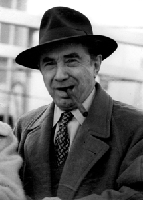 A special thanks to Ginny Kilander of the University of Wyoming’s American Heritage Center, who arranged for us to see the correspondence of theatrical and literary agent Bertha Klausner, who handled negotiations for Lugosi’s appearance in the 1951 stage tour.
A special thanks to Ginny Kilander of the University of Wyoming’s American Heritage Center, who arranged for us to see the correspondence of theatrical and literary agent Bertha Klausner, who handled negotiations for Lugosi’s appearance in the 1951 stage tour.
The References list the principle sources used in the research; we heartily appreciate the efforts of the researchers and writers who preceded us. Chief among these are Lugosi biographers and writers on horror film history. Though the biographies may be incorrect on the details of 1951, they include valuable eyewitness accounts of key events leading up to the Dracula tour. Arthur Lennig’s Lugosi biography, in addition to its pivotal role in advancing serious study of Hollywood horror movies, contains his personal recollections of meeting Bela and Lillian Lugosi in the late 1940s. In their books, Gary D. Rhodes and his co-authors have added a wealth of information on Lugosi’s life before and after 1951. An inspiration to us has been David Skal’s Hollywood Gothic, which tells the compelling tale of the Dracula legend in the 20th century both as cultural history and as human drama. If our work is somehow seen as a continuation of David’s, we have succeeded in no small measure.
Before horror films became accepted as a topic of scholarly study, their history was recorded almost exclusively in “monster movie magazines” that began proliferating in the late 1950s. Though definitely aimed at the same juvenile audiences that most monster movies target, they too contain valuable personal memoirs. Among those key to our work are Famous Monsters of Filmland (for its articles “When Dracula Invaded England” and “Bela Lugosi–14 Fantastic Pages of Facts You’ll Never Forget”), Castle of Frankenstein and Fantastic Monsters of the Movies (for the reminiscences of Lugosi in 1951 of William K. Everson and Alex Gordon). Almost every issue of Cult Movies had at least tidbits of interest in our work. Monster movie magazines exist only because of monster movie lovers, many of whom generously opened their private collections to us and responded to our many questions. They include Buddy Barnett, the late Richard Bojarski, Ron Borst, Mike Copner, Richard Golen, Charles Heard, Bob Madison, Bryan Senn, Tom Weaver, David Wentink, and Jeanne Youngson.
A special thanks to Marcus Brien, whose enthusiasm for a second edition rekindled ours; and to D’Arcy More for access to the original pressbook for Phantom Ship.
Monster movie lovers had a big hand in the production of this book. Eileen Wolfberg served as chief editor, aided by proofreaders Ron Bertram, Anthony Caranci, Doug Gibson, and Greg Mank. Tom Jackson designed the book, and readied it for production, and designed the dustjacket, using cover art by Haig Demarjian.
No book such as ours would be possible without the reminiscences of those who were there. The Internet was just coming of age as our first edition took shape, thus we had to hunt down facts the old-fashion way. Our letters to various local newspapers, appeals to radio talk shows and sometimes almost door-to-door inquiries brought many welcome responses from people who saw Lugosi perform in 1951. They and others who have offered some valuable information, helped us along, or just convinced us that we were on the wrong track and saved us a good deal of disappointment, include: William Abbot, Thomas Alderson, Bill Bain, Matthew Banks, Larry Barnes, Mrs. P. Bates, E.R. Billiald, Garry Bowker, Paul Brooks, Eric Broomhead, Emrys Bryson, Tim Carder, Ken & Olga Caswell, Mrs. Pat Collins, Geoffrey Cord, Douglas Deakin, Mike Drew, David Drummond, Barry Dunnill, Keith W. Eley, Mark Elliott, Peter Fairbrass, John Fern, Maureen Fernandez, Christine Fevyer, Dilys Flanagan, John Foster, Jan Foster-Barlett, Georgina Gibson, George Ginn, Alan Goble, Dave Godin, Beryl Goodall, David Gordon, Audrey Greetham, Simon Greetham, Wendy Gregory, Mrs. J. Gretton, Peter Haining, Mary Hardie, Terry Hawes, M. Henge, Mrs. B. Hodgson, Roger Holmes, Bob Illsley, G. Jackson, Robin James of the Gothique Film Society, Mrs. Elizabeth Jardine, Kip-xool & Kimball Jenkins, Reg Jepson, E. Jones, Doug Kelly, Michael Kilgarriff, Al Kraus, Trevor Lee, Alex Leslie, Gerry Leslie, Terry Lomas, Harry Ludlam, John McCluskey, Geoff Mellor, Elizabeth Miller, Mick Nash, Roger Neil, Mickey O’Donoughue, John Offord, David Paramor, Frances Pearce, Mrs. Joy Phillips, Christopher L. Pratt, Roger Richardson, D. Rickard, Vera Robinson, Denis Robson, Maurice Rodgers, Barbara Rooney, Stuart Samuels, Peter Scott, J.E. Scotter, David Shepard, Curt Siodmak, Gordon Skipworth, Irene Smith, Christine Somerfield, George Stanworth, Ron Stenson, Paul Taylor of Samuel French Limited, Edward Thompson, Doug Todd, Johanne L. Tournier, D. Towlard, Chris Veinot, Peggy Verrall, William White, M.F. Williams, Mrs. Dorothy Wood, Peter Wood, and P. Worthy.
Rev. Eric Blakebrough of Pembrokeshire, the American Methadone Treatment Association, and the Library Services of the Institute for Drug Dependency in London were very helpful in tracing the history of methadone use in the United Kingdom in the early 1950s.
In addition to the 1951 Dracula tour, our book encompasses the three films Lugosi made in England, Mystery of the Mary Celeste (1935, also known as The Phantom Ship), Dark Eyes of London (1939, aka The Human Monster) and Mother Riley Meets The Vampire (1951, aka Vampire Over London, My Son The Vampire). Regarding the 1935 film, our appreciation for their reminiscences goes to cinematographer Eric Cross, Tilly Day, Anne Cowne, Alice Thacker and Barbara Jones of Lloyd’s Register of Shipping, Stuart McKean, Mike Murphy, and Fred Humphreys. Cinematographer Bryan Langley and Allan Tyrer provided unique information on Dark Eyes of London, as did Dora Bryan and Mike Simpson for Mother Riley Meets The Vampire. A special thanks to Steve King, biographer of Arthur Lucan and Kitty McShane (aka Old Mother Riley & Her Daughter Kitty).
An overlooked figure who pops up often in our story is Hamilton Deane, who wrote, produced and starred (as Van Helsing) in the first dramatization of Dracula in 1924. No biography of Deane has yet been published, and available accounts of his life are quite sketchy. John and Ann Burton, Deane’s nephew and niece, and Bernard Davies and Dave Hawley of the Dracula Society, provided the details that portrayed Deane and his wife and collaborator, Dora Mary Patrick, as the endearing individuals they were. Bernard Davies also contributed a valuable reminiscence of his meeting with Bela in 1951.
Before Bela and his wife Lillian left for Britain in 1951, they formed close friendships with three young Englishmen, Richard Gordon, Alex Gordon and the late William K. Everson. In 1974, Bill Everson spoke briefly with one of the authors about his time with Bela, but unfortunately passed away before our project took form. The Gordon brothers have generously shared their memories with us, and were just as generous to the Lugosis in 1951, when Bela needed some conduit to England to make his tour possible. Dick Gordon was instrumental in arranging both the Dracula stage tour and the making of Mother Riley Meets The Vampire; and is perhaps the only man to have been with the Lugosis on both sides of the Atlantic in 1951. His recollections and insights have been priceless in reconstructing Bela’s and Lillian’s time in Britain, and we are forever in his debt. Another New Yorker who knew the Lugosis well in 1951 and shared his memories with us was Bela’s fellow Hungarian expatriate, the late Gabriel Hackett.
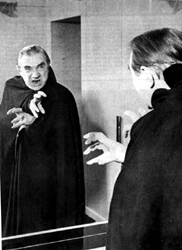 Archived theatre financial records of 1951 were destroyed long ago. A special thanks to retired theatre manager Raymond Lane for retrieving from his personal mementos the one known surviving tally sheet of a week’s box office take. Publicity pictures of the Dracula company were taken by photographer George Harrison Marks. Copies of individual photos pop up in various archives, but no full set is known to exist. Josie Harrison Marks rummaged through her attic, failed to locate the lost treasure, but did share with us what she could find.
Archived theatre financial records of 1951 were destroyed long ago. A special thanks to retired theatre manager Raymond Lane for retrieving from his personal mementos the one known surviving tally sheet of a week’s box office take. Publicity pictures of the Dracula company were taken by photographer George Harrison Marks. Copies of individual photos pop up in various archives, but no full set is known to exist. Josie Harrison Marks rummaged through her attic, failed to locate the lost treasure, but did share with us what she could find.
Special thanks also to Rosemary Mather (now Rosemary McClory), who as a teenager spent a golden afternoon with Bela in 1951 at a theatre garden party; to Roy Tomlinson who patiently waited for his screen idol outside the Theatre Royal in Nottingham, and to Kelvin Allen and Derek Pickering who separately penetrated the inner sanctum of Bela’s dressing rooms. All of them shared their recollections with us.
In addition to Dick Gordon, our deepest thanks go to the people who worked with Bela daily in 1951, without whose memories, the story of the actual tour could be only what was reported in newspapers or visible from theatre seats. Bela worked mainly with people in their 20s and early 30s, and we have been fortunate to locate many of them. For them, their experience with Bela was a few weeks or months of work from decades ago, but they delved into their pasts to relate some treasured anecdotes and details of working day to day on the road with the Lugosis. They are John Mather, co-producer of the Dracula tour; Richard Eastham, director; Janet Reid, assistant stage manager; George Routledge, whose firm handled publicity; special effect manager Ann Coupland (now Ann Croft), and cast members Richard Butler, Joan Harding, Eric Lindsay, John Martin, Joan Winmill (now Joan Winmill Brown), and Sheila Wynn (now Sheila Eyre). April Young put us in touch with Joyce Wilson, widow of Ralph Wilson, the tour’s second Van Helsing.
Some of those who helped us in preparing the first edition—the Gordon Brothers, John Mather, Richard Butler, Bernard Davies among them—are now gone. We feel as indebted to them in 2015 as we felt in 2000, and this book is a modest testament to them.
Many who worked closely with Bela and Lillian in 1951 passed away before we could get their stories. In telling the story of 1951, we have occasionally made judgements on their contributions and, rarely, conjectures on their thoughts. Without the benefit of their personal recollections, such surmises may be inaccurate; we apologize both to them and our readers for any errors.
In the early 1970s, John Mather survived a harrowing ordeal during which he was twice declared clinically dead in the space of a few days. Under a pseudonym, he published his recollections of the experience. Second Chance tells of John’s search for:
…some proof that I had been saved for some valid reason. Just some sign, some indication that I should have died but it was not to be; some higher power had kept me alive, against all medical rationality, for a Purpose.
John achieved a great deal after the Dracula tour, and certainly did not wait by his telephone for us to contact him. Likewise, all of Bela’s co-workers from 1951 have lived full lives since then. If there is a grand plan or purpose, a small piece of it is the book you now hold in your hands. We have continually marveled at our good fortune in finding needed information, in locating the right people and in the cooperation afforded us. Bela’s visit to Britain in 1951 failed to generate the career comeback he desperately sought. His and Lillian’s disappointment shaped the legacy of their time in Britain, and masked the triumphs beneath the anguish. Thanks to the many who unselfishly aided us and to whatever power guides us, the full story of 1951 can now be told.

